The Future of Solar Energy for Households
The future of solar energy for households presents a landscape marked by innovation and opportunity. Advancements in technology, alongside decreasing installation costs, are making solar solutions more accessible to homeowners. As communities explore collaborative energy programs, the potential for sustainable living grows. Yet, questions remain about the long-term implications of these trends on energy independence and environmental impact. What lies ahead for homeowners looking to harness the power of the sun?
The Rise of Solar Technology: Innovations Transforming Households
As households increasingly seek sustainable energy solutions, the rise of solar technology has introduced a range of innovative products and systems that are transforming energy consumption. Smart solar panels, equipped with advanced sensors, optimize energy capture by adjusting their angle to the sun’s position. Energy storage solutions, such as high-capacity batteries, allow homeowners to store excess energy generated during the day for use at night. Additionally, solar-integrated appliances are becoming more common, enabling seamless energy management within homes. Moreover, community solar programs are emerging, allowing multiple households to share solar resources, increasing accessibility. These innovations not only enhance energy efficiency but also empower homeowners to reduce their carbon footprint and contribute to a more sustainable future. Furthermore, the renewable energy sector is a significant source of job creation, which can benefit local economies as solar technology adoption increases.
Cost Trends: The Decreasing Price of Solar Installations
The cost of solar installations has seen significant reductions in recent years, driven by advancements in technology and economies of scale. Government incentives have also played a vital role in making solar energy more accessible to households. As these trends continue, the affordability of solar systems is likely to improve further, encouraging wider adoption. Moreover, adopting solar energy aligns with sustainable practices that contribute to environmental protection and cost savings for consumers.
Installation Price Reductions
With advancements in technology and increased competition in the market, the cost of solar installations has seen a significant decline over the past decade. This reduction can be attributed to improved manufacturing processes, which have lowered the prices of photovoltaic panels and related equipment. Additionally, economies of scale have emerged as more households adopt solar energy, resulting in lower installation costs per unit. As a result, many homeowners now find solar energy to be a financially viable option. The availability of diverse financing options has further facilitated the shift, making solar installations more accessible. Consequently, the decreasing installation prices have contributed to a growing interest in solar energy as a sustainable choice for household energy needs.
Government Incentives Impact
How have government incentives shaped the landscape of solar energy adoption? These incentives, including tax credits, rebates, and grants, have greatly lowered the financial barriers for households considering solar installations. By providing direct financial support, governments encourage homeowners to invest in solar technology, thereby accelerating adoption rates. As a result, the demand for solar panels has increased, leading to economies of scale and further price reductions in the solar market. Additionally, the predictability of these incentives fosters consumer confidence, making solar energy a more appealing option for households. Consequently, the overall cost trends of solar installations have been positively influenced, demonstrating that effective government policies can enhance the growth of renewable energy sources in residential settings.
Technological Advancements Benefits
As advancements in solar technology continue to emerge, the cost of solar installations is experiencing a significant decline. This reduction in price is primarily driven by improvements in manufacturing processes, increased efficiency of solar panels, and economies of scale as demand grows. Innovations such as bifacial panels and energy storage solutions enhance overall system performance, making solar energy more appealing to households. Additionally, competition among manufacturers fosters lower prices, allowing consumers to invest in solar energy with reduced financial burden. Moreover, technological breakthroughs in materials, such as perovskites, promise even greater efficiency and lower costs in the future. As a result, households are increasingly able to harness solar energy, leading to greater energy independence and sustainability.
Environmental Impact: Reducing Your Carbon Footprint
A significant shift toward solar energy in households can greatly contribute to reducing carbon footprints. By harnessing sunlight for electricity, families can decrease their reliance on fossil fuels, which are major contributors to greenhouse gas emissions. The adoption of solar panels not only minimizes carbon dioxide output but also promotes cleaner air quality by reducing pollutants associated with traditional energy sources. Moreover, solar energy systems require minimal maintenance and possess a long lifespan, making them a sustainable choice for environmentally conscious homeowners. As more households adapt to solar power, the cumulative effect can lead to significant reductions in environmental degradation, fostering a healthier planet for future generations. Embracing solar technology is an essential step towards achieving a sustainable and eco-friendly lifestyle. Additionally, minimalism promotes mental clarity by allowing homeowners to invest in fewer but more meaningful possessions, aligning their values with sustainable practices.
Energy Independence: How Solar Can Empower Homeowners
Investing in solar energy not only supports environmental sustainability but also enhances energy independence for households. By harnessing the power of the sun, homeowners can generate their own electricity, considerably reducing reliance on traditional power grids. This self-sufficiency enables families to shield themselves from fluctuating energy prices and potential outages. Additionally, solar systems provide the opportunity for long-term savings on utility bills, allowing for improved financial stability. As technology advances, solar panels become more efficient and affordable, making them accessible for a broader range of homeowners. Ultimately, embracing solar energy empowers individuals to take control of their energy future, fostering a sense of autonomy and contributing to a more resilient community. Furthermore, the growing trend of hybrid work models is increasing the demand for sustainable energy solutions in residential areas.
Government Incentives: Financial Support for Solar Adoption
Government incentives play an essential role in promoting solar energy adoption among households. Tax credits and rebates, along with various state and local programs, can greatly reduce the initial costs associated with solar installation. These financial supports not only encourage homeowners to invest in renewable energy but also foster a sustainable future. Furthermore, government programs can streamline the adoption process, making it easier for households to transition to solar energy.
Tax Credits and Rebates
While many homeowners consider the shift to solar energy, tax credits and rebates greatly enhance the financial feasibility of such decisions. These incentives, often provided at the federal level, can greatly reduce the initial investment required for solar panel installation. For instance, the federal investment tax credit (ITC) allows homeowners to deduct a percentage of their solar system costs from their federal taxes, making solar adoption more accessible. Additionally, various state and local programs may offer rebate programs that further lower upfront expenses. By taking advantage of these financial incentives, homeowners can not only ease their budget constraints but also contribute to a sustainable energy future. Understanding and utilizing these tax credits and rebates is vital for maximizing savings on solar investments.
State and Local Programs
As homeowners increasingly seek sustainable energy solutions, state and local programs play a critical role in facilitating solar adoption through targeted financial support. These initiatives often include grants, low-interest loans, and performance-based incentives designed to reduce the upfront costs associated with solar installation. Many states have established renewable portfolio standards, encouraging utilities to offer rebates for residential solar systems. Additionally, local governments may provide property tax exemptions or streamlined permitting processes to further incentivize solar adoption. By tailoring their programs to meet community needs, states and municipalities can enhance accessibility to solar technology. Consequently, these programs not only promote renewable energy but also contribute to job creation and economic growth within local economies.
Storage Solutions: The Role of Battery Systems in Solar Energy
Battery systems play an essential role in the optimization of solar energy for households, ensuring that excess energy generated during sunny days can be stored and utilized during periods of low sunlight. These storage solutions enable homeowners to maximize their solar investment by providing power during evenings or cloudy days, thereby reducing reliance on the grid. Modern battery technologies, such as lithium-ion, offer improved efficiency, longevity, and capacity, making them increasingly popular. Additionally, advancements in battery management systems allow for better monitoring and control of energy usage. As the demand for renewable energy sources grows, integrating battery systems into home solar setups becomes vital for enhancing energy independence and achieving sustainable living. The future of solar energy heavily relies on these innovative storage solutions.
Smart Home Integration: Enhancing Solar Efficiency
Integrating smart home technology greatly enhances the efficiency of solar energy systems, allowing homeowners to optimize their energy usage and streamline management. Smart thermostats, for example, can adjust heating and cooling based on solar energy production, minimizing reliance on the grid during peak hours. Additionally, smart appliances can operate during periods of maximum solar generation, reducing energy costs. Homeowners can monitor real-time energy consumption through mobile applications, enabling informed decisions regarding usage patterns. Furthermore, advanced energy management systems can balance solar input with household needs, ensuring that excess energy is utilized effectively. By leveraging these technologies, households can considerably improve the performance of their solar energy systems, leading to greater savings and sustainability in their energy consumption.
Community Solar Projects: Collaborating for Sustainable Energy
While individual solar installations have gained popularity, community solar projects offer a collaborative approach to sustainable energy that benefits entire neighborhoods. These initiatives allow multiple households to share the benefits of a single solar array, making clean energy more accessible, especially for those who cannot install solar panels on their own properties. Participants typically purchase or lease a portion of the solar system, receiving credits on their energy bills based on the electricity generated. This model not only reduces individual costs but also fosters community engagement and awareness regarding renewable energy. Additionally, community solar projects can enhance local economies by creating jobs and supporting sustainable practices, demonstrating that collective efforts can lead to significant environmental and economic benefits for all involved.
Future Predictions: What to Expect in Solar Energy Development
What innovations lie ahead for solar energy development? Experts predict significant advancements that could revolutionize household solar systems. Improved photovoltaic materials, such as perovskite cells, promise higher efficiency and lower production costs. Energy storage technologies, particularly lithium-sulfur batteries, may enhance energy management, allowing households to store excess energy for later use. Additionally, integration with smart home systems is expected to optimize energy consumption and usage. Innovations in solar panel recycling will address environmental concerns associated with disposal. Moreover, government incentives and evolving regulations are likely to encourage widespread adoption. As these technologies mature, households can anticipate not only reduced energy bills but also greater contributions to a sustainable energy future, making solar energy more accessible and efficient for all.
Frequently Asked Questions
How Do Solar Panels Perform in Cloudy or Rainy Weather?
Solar panels can still generate electricity during cloudy or rainy weather, though efficiency decreases. They rely on diffuse sunlight, allowing them to produce energy, albeit at lower levels compared to sunny conditions. Performance varies by location and technology.
What Maintenance Is Required for Solar Panel Systems?
Maintenance for solar panel systems includes regular cleaning to remove dirt and debris, periodic inspections for damage or wear, checking electrical connections, and ensuring peak performance through monitoring software. These tasks help maximize efficiency and longevity.
Can Solar Energy Power My Home During a Blackout?
During a blackout, solar energy can power a home if equipped with a battery storage system. This allows stored energy to supply electricity when the grid is down, ensuring continuity of power for essential needs.
How Long Does It Take to Install Solar Panels?
The installation of solar panels typically takes one to three days, depending on the system size and complexity. Factors such as permitting, weather conditions, and the contractor’s schedule can influence the overall timeline considerably.
What Happens to Solar Panels After Their Lifespan Ends?
After their lifespan ends, solar panels are typically recycled or repurposed. Materials such as glass, metals, and silicon can be recovered, minimizing waste and environmental impact, while promoting sustainable practices in the renewable energy sector.
Conclusion
To sum up, the future of solar energy for households is bright, driven by technological innovations and decreasing costs. Homeowners are increasingly empowered to embrace solar solutions, enhancing energy independence while minimizing their carbon footprint. With supportive government incentives and the rise of community solar programs, access to sustainable energy is becoming more feasible for all. As advancements continue in solar technology and storage solutions, residential energy consumption is poised for a significant transformation, paving the way for a greener future.



